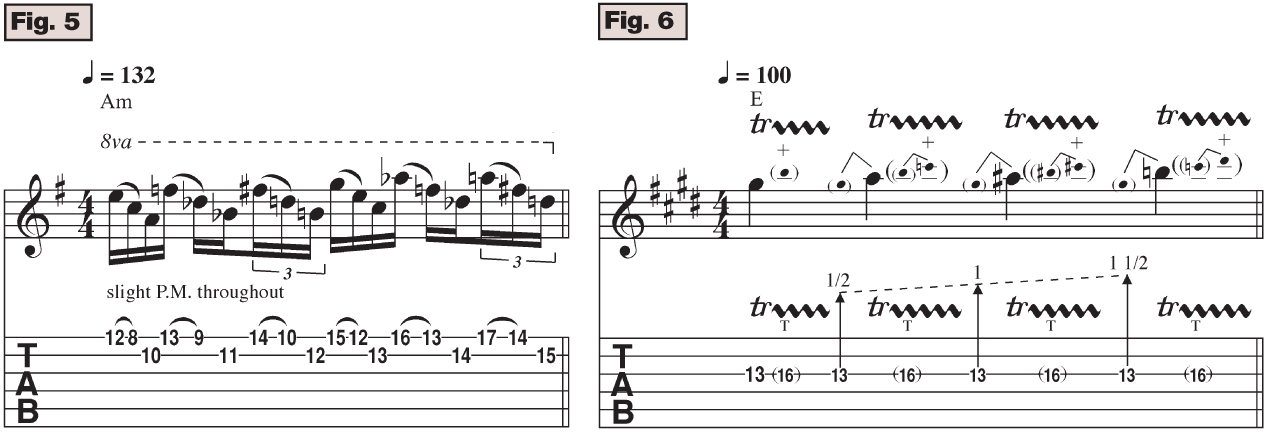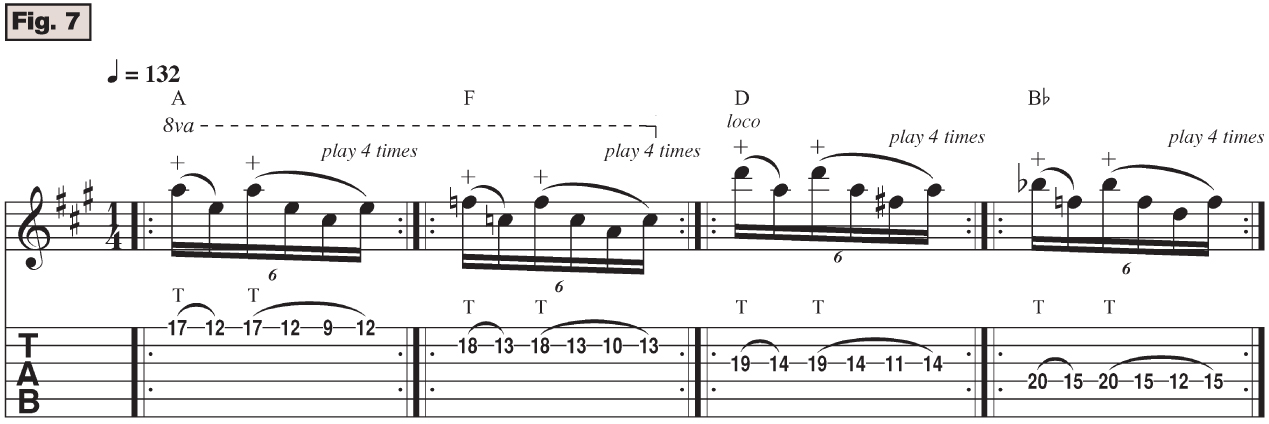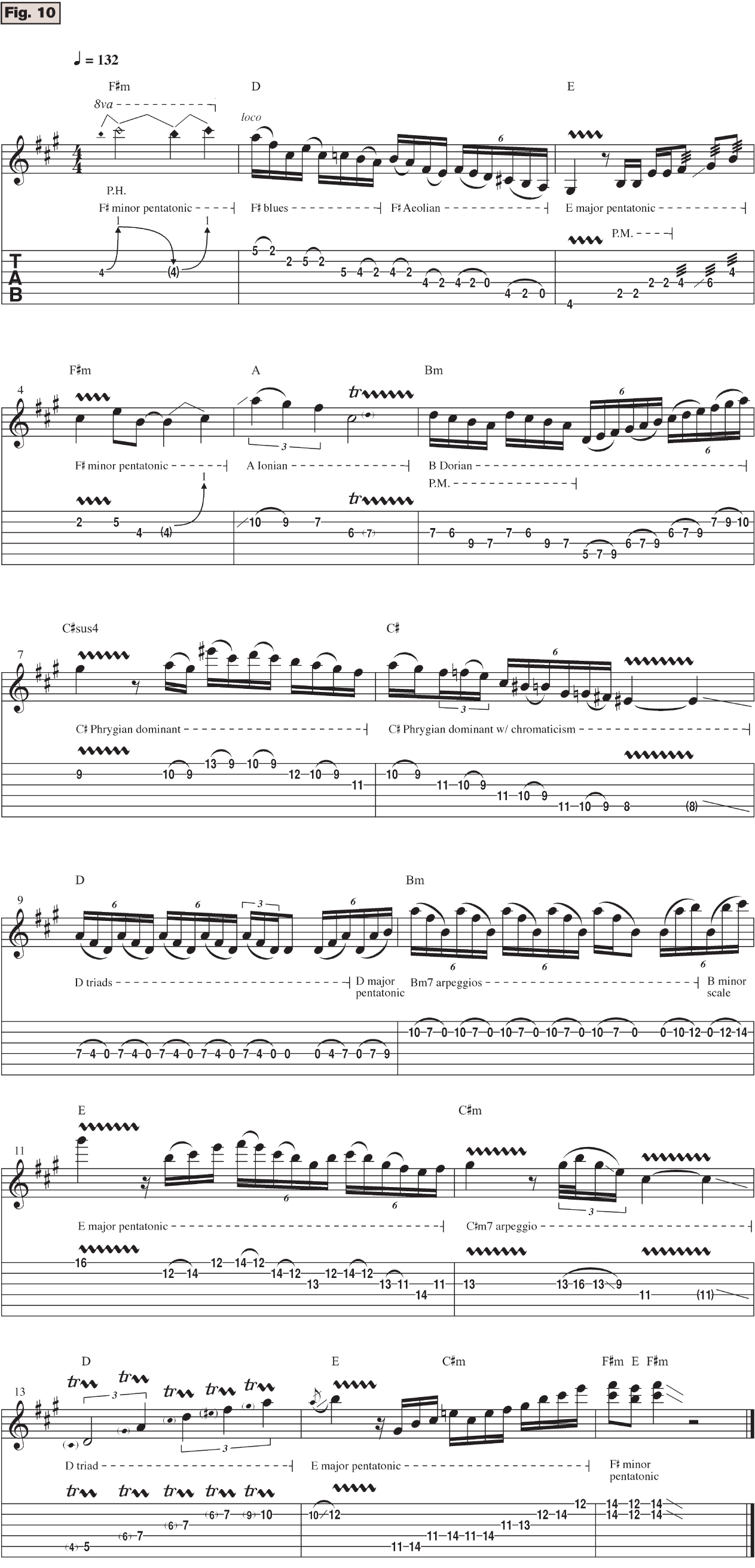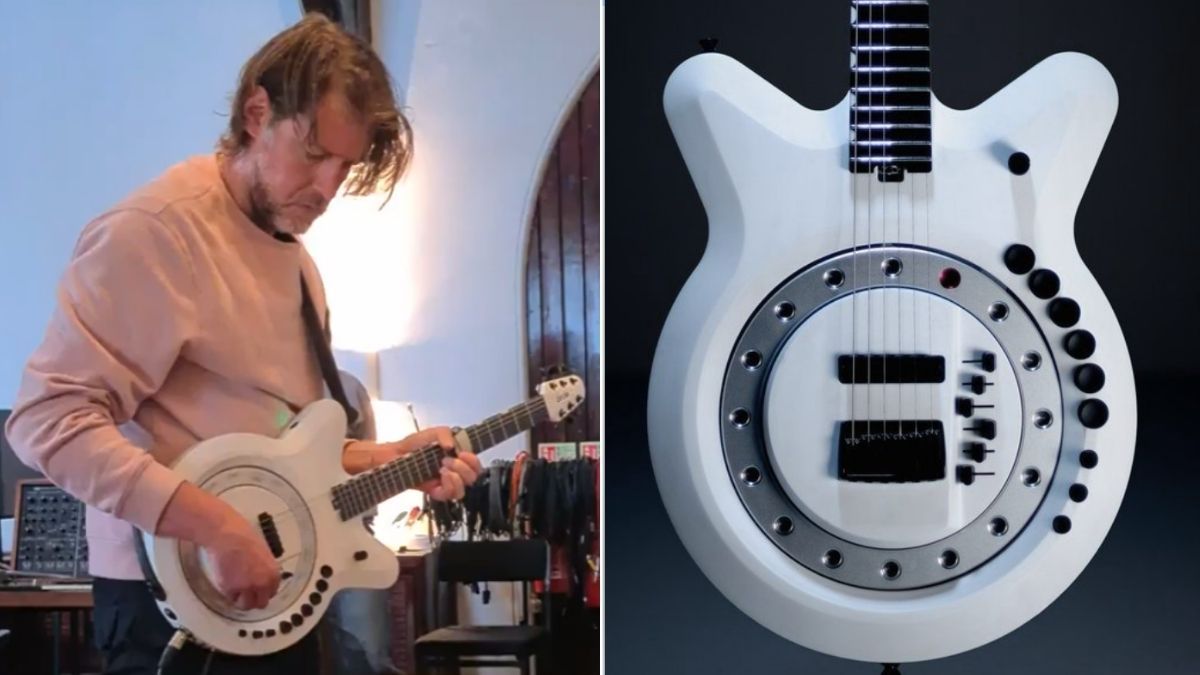
In the world of heavy metal, hot guitarists are a dime a dozen.
Yet only a precious few stand the test of time and become enduring guitar gods.
Randy Rhoads was one such player. Joining forces with singer Ozzy Osbourne in 1979, Rhoads burst onto the metal scene like a bolt from the blue.
He was blessed with dazzling chops and an innate comprehension of music theory, and his style had a perfect blend of flash and melodic structure.
Flowing legato sections segued to impossibly fast, palm-muted picking passages; incendiary trills and daring chromatic maneuvers coexisted with classically influenced melodies—all of which were derived from a seemingly inexhaustible supply of scales and arpeggios and laid out across an ever-shifting rhythmic landscape.
What's more, Rhoads was so precise that he could seamlessly double-track anything he played, for maximum sonic density.
Sadly, only three recordings—Blizzard of Ozz, Diary of a Madman, and Tribute—captured Rhoads' genius before a tragic airplane crash, in 1982, cut his life short. But the musicianship that lies within those grooves is as stunning and inspirational today as it was then.
All the latest guitar news, interviews, lessons, reviews, deals and more, direct to your inbox!
Sequences and Scales
Rhoads would often sprinkle a solo with a flurry of pentatonic pull-offs such as those in FIGURE 1. Built from the A minor pentatonic scale (A-C-D-E-G), this lick is inspired both by the opening moments of the first solo in "Mr. Crowley" and by the fill just before the last verse of "I Don't Know." It's interesting to note that while Rhoads possessed the facility to rip through lines such as these using alternate picking, he often chose a legato approach for a smoother, more flowing outcome.

FIGURE 2 features a three-notes-per-string legato scale run inspired by the solos in "Crazy Train," "Suicide Solution," and "Mr. Crowley." This line zips up the A natural minor scale (A-B-C-D-E-F-G) in a blinding flash of hammer-ons. Make sure you hammer firmly onto every second and third note, striving for equal volume of the pick attacks.
Blues Licks and Mixed Scales
Rhoads was fond of the blues scale (1-b3-4- b5-5-b7), and often milked its flatted 5th for all it was worth. For example, notice the emphasis on the Bb in FIGURE 3A, an E blues (E-G-A-Bb- B-D) lick inspired by the opening phrases of the "I Don't Know" solo. Rhoads often mixed blues-scale licks with diatonic scales, and modes such as Aeolian (natural minor), Phrygian (1-b2-b3-4-5-b6-b7), and harmonic minor (1-2-b3-4-5-b6-7).
Reminiscent of the "Crazy Train" solo, FIGURE 3B offers a composite of F# Aeolian (F#-G#-A-B-C#-D-E) and F# blues (F#-A-B-C-C#-E).

Chromaticism
Chromaticism is another hallmark of Rhoads's soloing style. His chromatic techniques ran the gamut from the simple use of tension tones (notes that lie outside of pentatonic and diatonic scales) all the way to full-blown chromatically modulating passages such as the ones found in FIGURES 4A-B.

FIGURE 4A is similar to a move Rhoads used in "S.A.T.O.," where a minor-3rd hammer-on is moved down in half steps. Notice that the lick starts on two solid chord tones (G and E, the b3rd and root), then chromatically targets two resolving tones (D and B, the b7th and 5th). FIGURE 4B features one of Rhoads' pet motifs: a descending fournote slice of a scale pattern—in this case, F-E-D-C of the D minor scale (D-E-F-G- A-Bb-C). Ascending chromatically, the palm-muted quadruplets hit sonic fruition with an Ab-G-F sequence over the Fm chord.

FIGURE 5 features another of the guitarist's favorite chromatic ploys, this one involving major and minor triads, along with partial 7th-chord arpeggios, moving along the top two strings.
In this example, an A minor triad (A-C-E) moves up in half steps, then segues to the upper portion of an Am7 arpeggio (A-C-E-G), which also ascends chromatically. FIGURE 6 breaks the bounds of chromaticism with a pick-tapped trill that ascends in pitch via a gradual bend executed with the fret hand's 4th finger. Notice that, again, the example begins and ends on solid chord tones (G# and B [3rd and 5th], and B and D [5th and b7th]).
Tapping and Trills
Unlike many of his peers in the early Eighties, Rhoads avoided jumping on Eddie Van Halen's tapping bandwagon. When he did choose to tap, though, the results were stunning, as the sequence in FIGURE 7 reveals. In the style of the breathtaking climax of the "Flying High Again" solo, the example follows a double-tap/pull-off/hammer-on sequence constructed from triads that outline the changes. Some of the most dazzling Randy Rhoads moments are often mistaken for tapped excursions.

One such passage is the open string-pull-off extravaganza that occurs midway though his solo in the live version of "Suicide Solution," where he dispatches a sizzling array of triads and partials along the 1st [FIGURE 8] and 2nd strings.
Rhoads also had a penchant for classically influenced trills (two notes played in rapid alternation). He would use them to outline the chord tones of specific changes, as seen in FIGURE 9, where the notes of an Fb7 arpeggio (F-Ab-Cb-D) are alternated with notes a half step below.

The Solo
The solo [FIGURE 10] is a 15-bar rocker in the style of songs like "I Don't Know," "Flying High Again" and "Crazy Train." The first half (measures 1-8) sits firmly in the key of F# minor, riding a i-bVI-bVII-i-bIII-iv-Vsus-V progression (F#m-D-E-F#m-A-Bm-C#7sus4-C#). Measures 9-12 serve as a bridge, with modulating I-vi cadences (D-Bm and E-C#m) in the temporary keys of D and E major. Measure 13 signals a march back up (bVI- bVII-v-i; D-E-C#m-F#m) to the resolving i-bVII-i (F#m-E-F#m) chordal riff.
The solo opens, in typical Rhoadsian fashion, with a head-turning pinch-harmonic bend. To execute this two-octave harmonic, attack the G string aggressively with the side of your pick, simultaneously brushing the string with the side of your pick hand's thumb; the ideal position for this contact is right above the rear edge of the neck pickup.
Next comes a pull-off flurry made up of F# blues and F# Aeolian scales, followed by a tremolo-picked E major pentatonic (E-F#-G#- B-C#) climb. (Tremolo picking, in which notes are picked as rapidly and continuously as possible, was another Rhoads staple). An F# minor pentatonic (F#-A-B-C#-E) wrap-up (measure 4) mirrors the opening lick.
In measure 5, a short melodic passage capped with a quick trill nods to "Crazy Train," then segues to a brief Rhoads motif (see FIGURE 4B). Instead of moving chromatically, as expected, the motif spills into a three-notes-per-string B Dorian (B-C#-D-E-F#-G-F#) run (see FIGURE 2). C# Phrygian dominant (C#-D-E#-F#-G#-A-B; fifth mode of F# harmonic minor) provides the melodic framework for the chromatically enhanced legato phrasing of bars 7-8.
The fireworks in measures 9-10 are inspired by the open-string pull-off concepts described in FIGURE 8. Accenting the first and fourth note in each sextuplet should give you the propulsion needed for this rapid passage. A six-note pattern—down five scale steps, then up one—lies at the heart of the E major pentatonic phrase in measure 11. Visualize the pattern before putting the entire phrase together. In measure 12 a C#m7 arpeggio is laid out almost entirely on the G string; keep your eye on the 9th fret in order to hit it precisely.
The trills come fast and furious in the next measure. Targeting the notes of a D major triad (D-F#-A) will guide you through this quarter-note-triplet passage. Finally, a relatively simple run up the E major pentatonic scale and a pair of dyads (F#/C# and E/B) provide a logical and musical conclusion to the solo. Now that we've gone through the solo bit by bit, look back over it and take note of its the rhythmic diversity—yet another characteristic of Rhoads' brilliant soloing work.

A Musicians Institute teacher since 1989, Tom Kolb has published many books on guitar technique and been featured in instructional DVDs by Hal Leonard. He is also the author of the Soloing Strategies column in Guitar World magazine.

